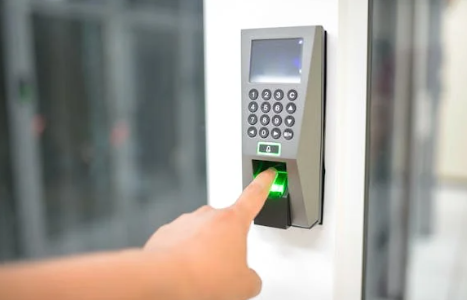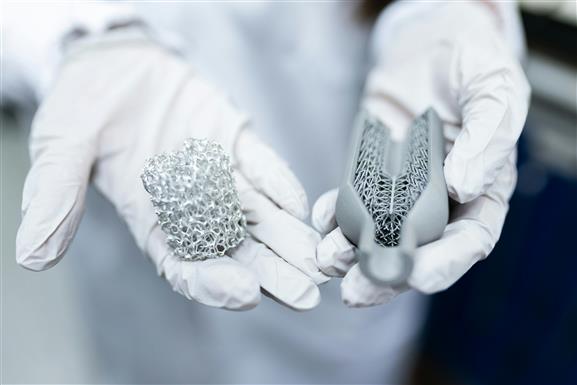
Biometrics once felt like science fiction—futuristic systems that could identify people by a fingerprint or the shape of their face. Today, those technologies are everywhere. From unlocking phones to passing through airport security, biometric authentication has become part of everyday life.
But we’re entering a new phase. The next generation of biometric technology is moving beyond surface-level features. It’s digging deeper—into our voices, our heartbeats, even the way we walk or type. These emerging methods promise more seamless identification and greater security. At the same time, they raise tough questions about consent, surveillance, and what it means to be uniquely human in a world driven by data.
Are we ready for a future where our bodies—and behaviors—are the password?
From Static Traits to Dynamic Patterns
Traditional biometrics like fingerprints, iris scans, and facial recognition rely on physical, relatively unchanging features. These identifiers are static: once scanned, they stay largely the same throughout a person’s life.
But new biometric systems are exploring dynamic traits—those that capture behavior, rhythm, and movement. These include:
- Gait recognition: The way someone walks, including stride length, speed, and body posture, can uniquely identify them. It’s already being tested in airports and public spaces for passive surveillance.
- Keystroke dynamics: How a person types—speed, pressure, pauses between letters—can serve as a signature. Financial institutions and cybersecurity firms use this to spot fraud or verify identity during login.
- Voice biometrics: Unlike simple voice recognition, advanced systems analyze tone, pitch, cadence, and vocal tract shape to identify a person, even in noisy environments.
- Heartbeat patterns: Using radar or wearables, some technologies analyze the electrical patterns of the heart (ECG or EKG) as a biometric marker. Each person’s heart rhythm is slightly different.
- Vein pattern recognition: Unlike fingerprints, which can be copied or lifted, vein recognition maps the unique layout of veins under the skin—usually in the palm or finger—using infrared light.
- Brainwave identification (EEG): Still largely experimental, this uses patterns in brain activity as identifiers. Users wear a headset that records responses to stimuli; the patterns are then matched against stored profiles.
These modalities offer a higher level of complexity—and potentially, resistance to spoofing—compared to traditional methods. But the complexity also introduces new risks.

The Push for Frictionless Security
The appeal of these advanced systems is clear: they offer a less intrusive, more passive approach to identity verification. In theory, you won’t need to stop and present a fingerprint or type a password. You’ll be recognized as you move, speak, or behave—just by being yourself.
This is already being rolled out in small ways. Some banks use voice recognition for phone-based identity checks. Smartwatches are exploring continuous authentication using heart rhythm. Surveillance systems in some countries are piloting gait and behavior analysis in public spaces to track persons of interest.
The goal isn’t just security—it’s convenience. Users don’t have to remember anything. Authentication becomes invisible.
But that’s where concerns begin.
Privacy on Autopilot
The deeper biometric systems go, the less control users may have over their participation. You can choose not to scan your fingerprint or look at a camera. But how do you opt out of being recognized by your voice or your walking pattern when you’re in public?
The possibility of “ambient” surveillance—where identification happens without consent—raises serious ethical issues. Just because a system can recognize you without active input doesn’t mean it should.
Furthermore, biometric data is not like a password. You can’t change your gait or heartbeat easily. If it’s stolen or misused, the consequences are harder to reverse.
Data protection regulations like GDPR in Europe and newer state-level laws in the U.S. try to address this by requiring consent and transparency. But enforcement lags behind the speed of deployment, and gray areas abound.
Who owns the data collected from your body? How long is it stored? Can it be sold, or used to build behavioral profiles? These questions remain under-addressed.
The Rise of Biometric Scoring
Beyond authentication, next-gen biometrics are also feeding into systems of evaluation. In some workplaces, typing patterns and computer interactions are monitored to assess employee engagement. Some insurance companies are exploring gait analysis and wearable data to evaluate physical health and adjust premiums.
This trend—using biometric data not just to identify, but to judge—is part of a broader shift toward algorithmic profiling. It blurs the line between security and surveillance, between identity and assessment.
What happens when your heartbeat signals nervousness during an interview? Or your walking pattern is flagged as erratic by an airport system? The implications go beyond privacy—they affect autonomy and fairness.
Spoofing, Hacking, and Trust
Even advanced biometrics are not foolproof. Researchers have demonstrated methods to spoof facial recognition with 3D masks, or mimic voices using AI-generated audio. Gait patterns can be imitated. Finger vein patterns might be replicated with enough effort.
As systems grow more complex, the attack surface widens. Hackers don’t always need to steal the data—they can manipulate the model. This makes securing the entire biometric pipeline—from sensors to processing to storage—critical.
Another issue is reliability. Dynamic biometrics, while harder to fake, are often more prone to environmental interference. Background noise, lighting, posture, or illness can throw off the system. Accuracy may vary across populations, age groups, and abilities—leading to concerns about exclusion or bias.
Trust in biometric systems will only grow if they work fairly and reliably across the board, not just for the “average” user.
Looking Forward: Control and Consent
The rise of next-gen biometrics invites a broader societal conversation—not just about what’s possible, but about what’s acceptable.
To that end, three principles should guide development:
- Transparency: Users must know when, where, and how their biometric data is collected and used.
- Consent: Opt-in should be the default. No one should be passively monitored without explicit permission.
- Control: Users should have the right to access, delete, or challenge the use of their biometric data.
In a world where our bodies are becoming data sources, maintaining agency is essential.

Final Thoughts
Next-gen biometrics represent a shift in how we relate to technology—not just as users, but as identities. They promise smoother security, richer personalization, and new forms of interaction. But they also come with new forms of vulnerability.
If fingerprints were the first handshake with digital identity, these emerging methods are more like a deep scan of the soul. They touch on behavior, emotion, and biology. They ask us to trade pieces of ourselves for convenience and safety.
That trade-off needs to be made thoughtfully—and, ideally, on our own terms.






